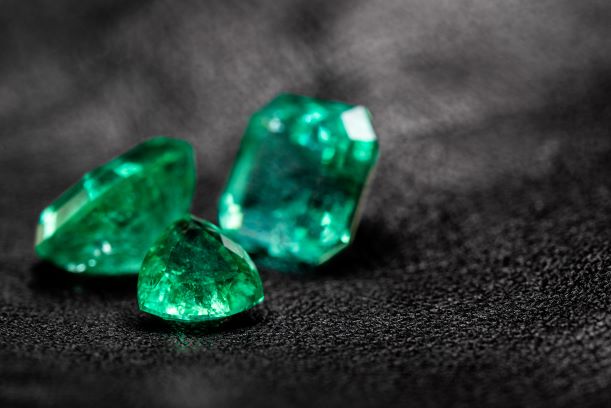Although it’s long been said that diamonds are forever, it seems like their popularity might actually be less durable than we once thought. Jewellery
Although it’s long been said that diamonds are forever, it seems like their popularity might actually be less durable than we once thought. Jewellery trends have come and gone through the years, but the latest contender seems to have become a serious rival to the girl’s best friend — coloured gemstones. The London Evening Standard recently reported that there has been a 10% year-on-year increase in searches for coloured gemstones, with emeralds being the most hotly sought-after jewel of them all.
Why have emeralds become so popular?
The surge in interest in gemstones has largely been fueled by the influence of celebrities and even the Royal Family, who have proudly sported the gem in their engagement rings. The Standard has cited Kate Middleton’s sapphire and diamond engagement ring as the start of the trend, which has since been picked up by Meghan Markle and Carrie Symonds, among others.
Emeralds’ popularity may, however, be linked to what the stones themselves mean. The green-blue jewel is seen as a reflection of a couple’s new life together, with green often used as a synonym for naivety. They are also considered “the stone of the heart” and, for the more spiritually-minded, they improve the wearer’s balance of emotions and calm, making them the perfect gem for engagement rings.
What does this mean for emerald production?
As emeralds have become more popular amongst brides around the world, a corresponding boost in the production of the gemstones themselves has consequently occurred. Mining emeralds is a difficult process, however, especially for those attempting to extract flawless gems. As jewellers Taylor & Hart note, flaws in emeralds are often considered part of their charm and, as a result, “a top-quality natural emerald will often be worth more than a top-quality diamond of the same carat weight”.
Indeed, emeralds are comparatively rarer than diamonds, even though they are found in countries around the world. The biggest exporters of emeralds are Zambia, Brazil, and Colombia, with the former being named as the primary source of the world’s supply, accounting for around 25% of all emeralds mined.
However, the current COVID-19 pandemic has put an indefinite halt to the world’s emerald auctions, which is particularly disheartening in the wake of a particularly successful 2019 for the industry. At the end of that year, a formerly-prohibitive tax on the export of emeralds from Zambia was suspended, while mines were granted a license extension for a further 25 years around the same time.
This would suggest that, once the world returns to something resembling normalcy, the emerald industry can return to its former glory, and the earlier trend of women sporting the elegant green stones on their fingers will also continue.



















































































































COMMENTS